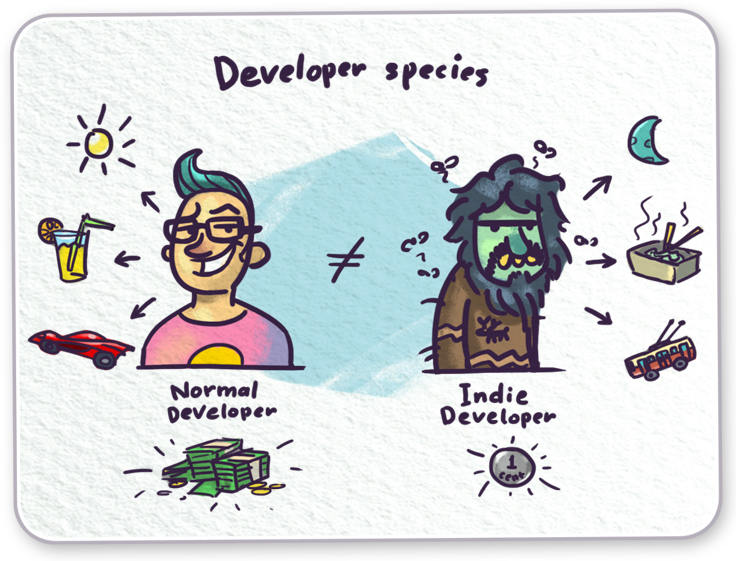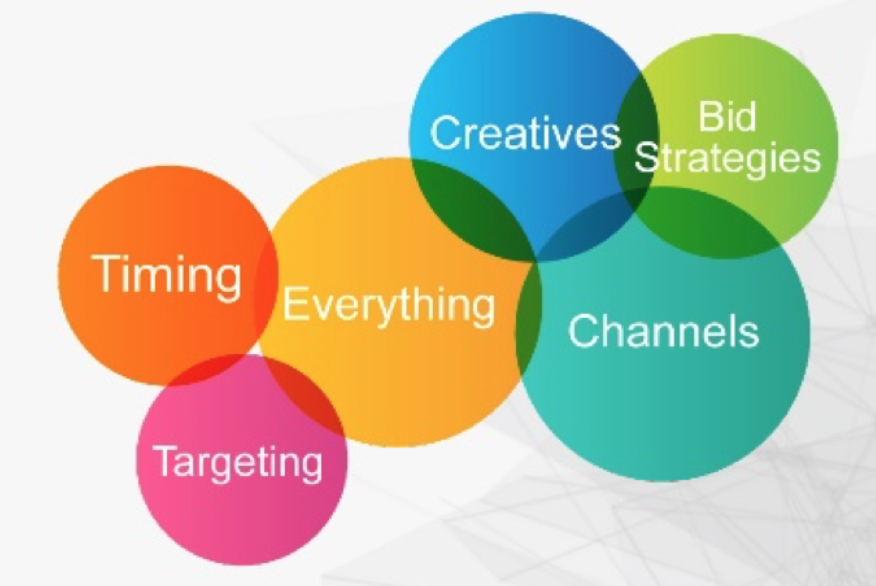Let me start with an unusual introduction. This blog post is not for the casual reader. My current goal is not to teach about something I’ve learnt in several years of practice. Instead, during the recent weeks, I became more and more curious about a trend that I have only found in the “arts” (books, movies, games).
This post is part of a research series I am planning to write about the work of a “Publisher”. Since I mostly evolve in the digital world, I will be more specifically interested into game publishers. Who are they? What do they do? Why do people sign with them? What kind of deals exist?
This post will start with some basic facts and most readers from the Gaming industry will probably find it boring. However, when you don’t come from this world, let me tell you that the concept of a Publisher is pretty odd.
Ooh, by the way, why do I care about all this? Well, I wonder if the concept could be applied to B2B SaaS companies. So this research series is some kind of quest for me. I eventually want to uncover whether there is business to be made, and if it’s the case… well, there is probably an adventure for bold people. Can a SaaS publishing company be thriving? 🤷♂️
What is a (game) publisher?
Let’s start with semantics. Publishing is the dissemination of literature, music, or information. Simple. Basically, there is a distinction between an author (the one in charge of creation) and the publisher (in charge of dissemination to the masses).

Historically, this activity appeared with the first printed books. Before the Gutenberg press, a book had to be manually copied, so distribution was very very limited. For a long time (until the Internet was invented), all “information” had to be supported by a physical medium (paper, floppy drives, CD-roms). Given the skills you probably need(ed) to create and distribute a physical media, you can understand that creation and dissemination were two separate jobs.
If we dive a little more into the tasks of a “traditional” publisher, wikipedia tells us:
Publishing includes the following stages of development: acquisition, copy editing, production, printing (and its electronic equivalents), marketing, and distribution.
When you are a creative mind, you don’t want to bother with these things. At the pre-2000 era, game studios were probably handling the creation, while publishers handled CDs burning, deals with mass distributors, and promotion.
–
More recently, fast internet has changed the story : games and apps can now be downloaded from virtually anywhere, on your desktop or on your mobile. Another thing also changed with the apparition of platforms (Steam, Google Play store, iTunes): a massive audience is already present, there is no need for physicial mass distribution anymore. So, what do the game publishers nowadays?
I will probably publish several other posts detailing exactly today’s publishers activities. So to make things short on this first episode, let me get the help of a video from “Ask GameDev”.
To summarize, a publisher will handle:
- Funding: a publisher can help to fund the development of a game based on an idea/prototype. So far, most publishers I have met were working in the “casual games” industry. These games are quick/easy to create and therefore, none of them actually fund games (quite the opposite: they are looking at retention metrics to decide whether to partner or not). It’s probably different when you deal with shooters, RPG or develoment-heavy games.
- Development: publishers will have inside devs who can help with the analytics stack, the Q/A, the localization and the certification. While I have no clue about the latest, analytics, quality assurance and localization are pretty remote from the daily job of a game studio. So if the publisher can provide help on these areas, it’s for the best of the partnership.
- Marketing: OK, this one is obvious to me. Publishers should be expert of the marketing side (dissemination), game studios should be experts in game design and production.
- Community (ecosystem): finally, as a publisher grows, its follower-base will grow too. So each game will benefit from the growing ecosystem. The bigger, the echo chamber.
–
The difference between indie game publishers and main stream publishers like Blizzard, EA, Nintendo, … is that mainstream publishers usually will have the dev team more or less inside its own company (comment if I’m wrong). The game studio will not be “really” independent anymore, and will have to manage deadline and budget specified by the main company. For indie game studios/publishers the relationship looks more like a symbiosis, where both depends on the other, but both are actually pretty autonomous.
Why would game studios call publishers in the first place?
Mobile games evolve in very competing space: games compete for the user’s spare time. There as many direct competitors (other games) as there are alternatives (sport, hobbies, movies/netflix, …). Developing a game is resource intensive, it often requires several full-time employees and several months of work to release the first production version.

To make things worse, while creating a game is difficult, distributing a game is equally challenging. If the game studio is not large enough to own an in-house marketing team, it will have better results if it partners with a publisher rather than trying to bet on organic acquisition to make the success of a game.
Oh, I realize that forgot to explicit some specificities of the mobile industry. Mobile apps are very special given the fact you need to download them on a “store” (iTunes, Play Store). In general, you cannot download a game directly from a publisher/editor. The app’s download page is like its website. People can find your app organically by searching for keywords on the store, or by clicking links on the web that point to your download page.
So, if you just put your game on the store, your only acquisition channel will be the “organic” one (people searching for keyword on the store). And believe me, even if do a lot of ASO (app-store optimization, it’s more or less like SEO), the numbers won’t allow you to have a big success overnight. You can still play with virality (“invite friends to get some virtual gold in our game”) but this will get good result only if your game is addictive in the first place.
So what does a publisher do that game studios don’t do in general? Well, the first thing is that they have long-lasting relationship with programm-managers at app stores, and they can get their games “featured” on regular events. When an app is “featured”, it will appear at the top of the charts for some days. And this, … oh dear, it’s like a moonshot for a game that is trying to acquire its first users. You’ll get a bunch of organic installs (non paid but based on relationships). On the long term though, the publisher will probably spend much of its time doing paid acquisition. It will invest a lot, and it’ll expect to see a good return on ad spend (ROAS) to justify the effort.
Paid acquisition campaigns require continuous efforts: analysis, management, visual/video creations. You need at least two distinct profiles to deal with this activity: an artist who will create “creatives” used in ads, and a user acquisition (UA) manager who will handle the campaign creation, tracking, optimization.

Finally, even if the game studio might have an artist devoted to ads creatives and where one of the manager could handle the ads management, one last thing might be missing: ca$h! When a game is unknown and has a small user base, the cash flow is probably very limited, so investing money into acquisition is risky for the studio. The publisher can fill this gap by putting its own money on the table until the game becomes profitable.
What does a publisher deal typically look like?
OK, let’s start with an obvious fact: partnership agreements are often mostly provided by publishers (they are used to it) and they are mostly in favor of the publisher. It also seems that some times (unfortunately, it sounds that it’s not so rare) some shady publishers push deals that will completely screw the game studio (see this section’s related links).
Cash/Financials
Here, deals really vary from one to another. All depends on what is actually done by the publisher and done by the studio. A fairly large range of royalties exist, they can extend from 20% to 70%.
The deal also depends on the product maturity when the deal is signed. Is the game in beta version? If it’s the case, then there is a lot of risk in financing the latest stages and the deal will weight in favor of the publisher. Is the game already released and famous in Europe and looking for a publisher for Asia? Then the royalties will be much more modest, and calculated on a different set of metrics.
Finally, one important part of the deal is about net/gross revenue. Often, publishers will only take account of the net revenue before calculating royalties. In net revenue, many charges can be applied. Almost always the platform commissions (iTunes and Play Store keep 30% of in-app purchases) will be accounted for. Very often, the marketing expenses will also be accounted for too.
So, let’s say that the deal is 50/50 net revshare and that commissions+marketing expenses are accounted for. Assume that the publisher invests 10K€ and that IAP (in-app purchases) generates 30K€ before platforms commissions. It is 21K€ after platform commissions. As 20% VAT applies, 16.8K€ is the net revenue. But if the marketing costs is removed from that, only 6.8K€ is left for revshare. This means that publisher and game studio will earn 3.4K€ net.
Intellectual Property (Grant of License, Rights of Exploitation)
One part of the deal that will not seem obvious to SaaS people, is related to IP (Intellectual Property). In games, the IP is really important (title, story, characters, visuals, and basically anything that the artistic team might produce).
Well, from my understanding, at least one thing is easy to understand: to advertise games, publishers need the right to use logos, pictures, videos from the said game, obvious. In that case, this is called a “License”. However, it seems that publishers often go much further and can take a good ownership of a game franchise, to sell game-related merchandising, to reuse the franchise with a game developed somewhere else (if your game studio is focused on match-3 games and you find a hit with a specific IP, maybe another studio can develop a 3D-platform game based on the same IP).
Finally, the publishers might ask the right to get the first approval/refusal if the studio develop a sequel to a game and seeks publishing for it. If the relationship is good, publishers will most likely want to pursue their activities on the game franchise, but if there was no success or no good relationship, the publisher might be eager to drop the next game. (Actually, based on who owns the IP after the agreement is signed, it might be the other way around, and the publisher might decide to create a sequel ad should ask the studio first if it wants to develop the game).
Goals and Milestones
The partnership between a game developer and a publisher should be like a synergy and often, the game dev will need to upgrade the product to meet the market expectations.
Since publishers have more insights about the market (who is using the app, what does competitors, …), they will often set goals and milestones to keep the project up to the competition.
Selling the game/company
The exit (selling the game to a bigger company) is important too. I have had not much insight yet, but the situation is probably evoked in the agreement, or is related to the IP section. I didn’t dig yet.
Related links
If you’re interested about what agreement contracts typically looks like, here is a very good article on the topic: https://legalgamer.weebly.com/blog/publishing-agreement-pitfalls-a-practical-guide-for-indie-devs
If you’re interested in how a game studios can prevent shady publishers to screw them, you can read about that on :
- How to avoid getting screwed in a game publishing deal
- How to spot an exploitative mobile game publishing deal – from a former publishing CEO.
Examples of an indie studio/publisher relationship
There are tons of game publishers out there… they are so many that they even advertise on Google Ads to attract game studios. Like this one:

There are also a lot of resources that help developer to find “indie-friendly publishers”: directories, lists, leaderboards, and lots of blog posts …
What’s important to keep in mind is that, very often, a publisher will be specialized in some given genre and platform. Conversely, some genres are more prone to publishing than others (this might be the subject of another blog post). For example, hyper casual games are full of publishers (Voodoo, Ketchapp, Kwalee, Lion Studios, …): game studios are pretty small (2 people seem to be the norm) and games are developed in a few days. They are sent to the publishers who look at retention metrics to decide if they partner with the studio or not.
Hyper casual games are a speedy business. The faster you can create a game, the more you can iterate with publishers. The more games apply to publishers, the more picky they become. As CPI can go as low as $0.2 (sometimes even lower), the game needs some monetization via ads and good retention to prove profitable. Few games are selected, but when they are, publishers invest a lot in paid acquisition. They can test and iterate really fast, and kill a game after a couple of days if it finally doesn’t meet expectations.
Next posts in the series
My current goal is to setup a project to publish B2B SaaS applications. I’ll probably have to look for one or two teammates, decide which apps I should approach and finally decide what the publishing tasks will be.
I will try to share all my progress by blogging. The first important step for me, is to look for some team mates before getting a first partnership. So, if you liked this article and if you evolve in the SaaS world or in the Publishing world, please help me to spread it. One of your connection might be interested.
So, let’s jump into the writing of the following posts:
- Game publishing for dummies (you just read it)
- What a Saas Publishing company would look like?
- Which SaaS apps should be published and which ones shouldn’t?
- What does a SaaS publisher do?
- The first SaaS Publisher is live, check it out